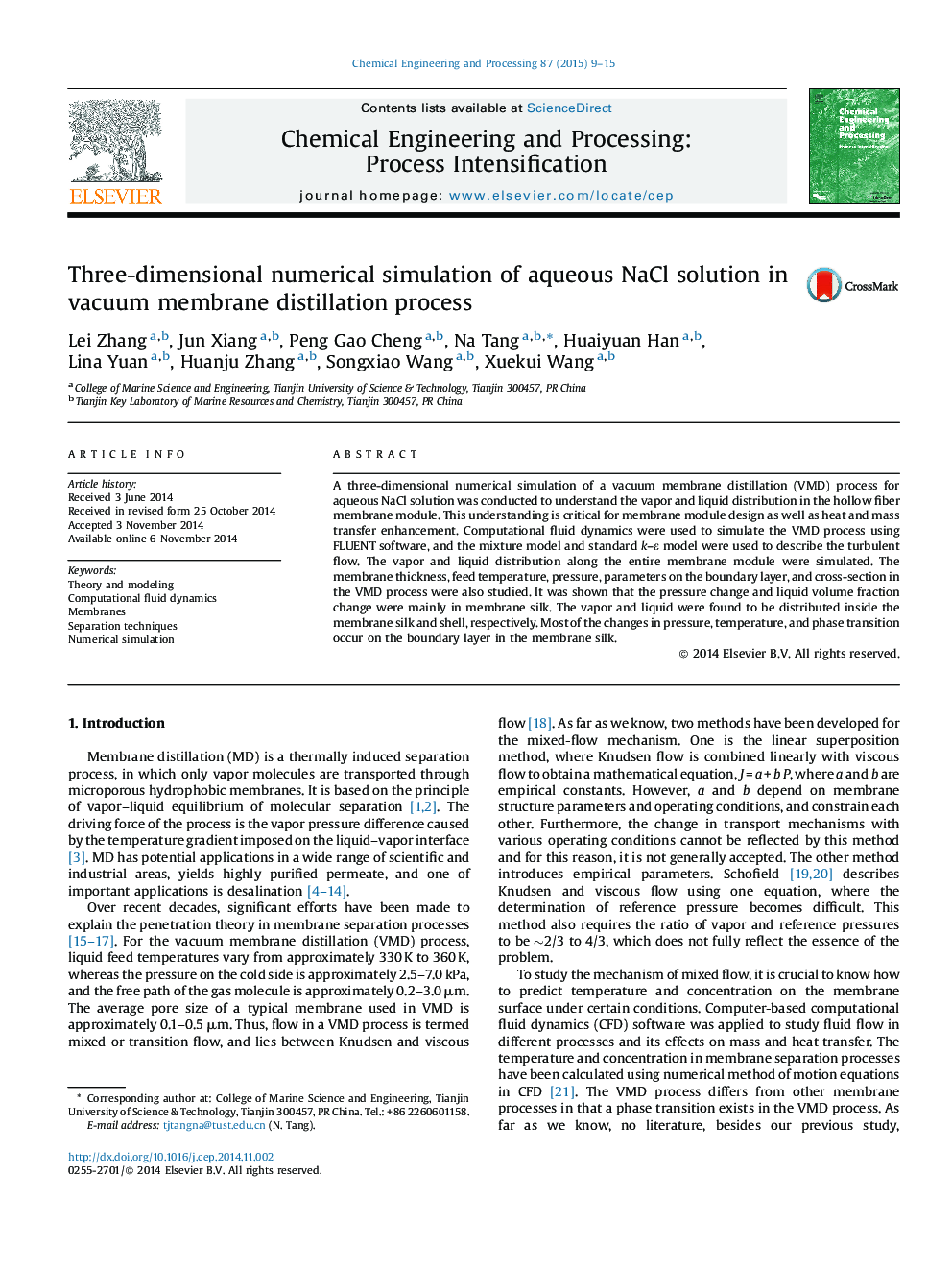| Article ID | Journal | Published Year | Pages | File Type |
|---|---|---|---|---|
| 686869 | Chemical Engineering and Processing: Process Intensification | 2015 | 7 Pages |
•Three-dimensional numerical simulation was used in vacuum membrane distillation.•The parameters on boundary layer and cross-sections of membrane silk were studied.•Temperature, pressure, vapor, and liquid distribution were simulated based on CFD.
A three-dimensional numerical simulation of a vacuum membrane distillation (VMD) process for aqueous NaCl solution was conducted to understand the vapor and liquid distribution in the hollow fiber membrane module. This understanding is critical for membrane module design as well as heat and mass transfer enhancement. Computational fluid dynamics were used to simulate the VMD process using FLUENT software, and the mixture model and standard k–ϵ model were used to describe the turbulent flow. The vapor and liquid distribution along the entire membrane module were simulated. The membrane thickness, feed temperature, pressure, parameters on the boundary layer, and cross-section in the VMD process were also studied. It was shown that the pressure change and liquid volume fraction change were mainly in membrane silk. The vapor and liquid were found to be distributed inside the membrane silk and shell, respectively. Most of the changes in pressure, temperature, and phase transition occur on the boundary layer in the membrane silk.
Graphical abstractFigure optionsDownload full-size imageDownload as PowerPoint slide
